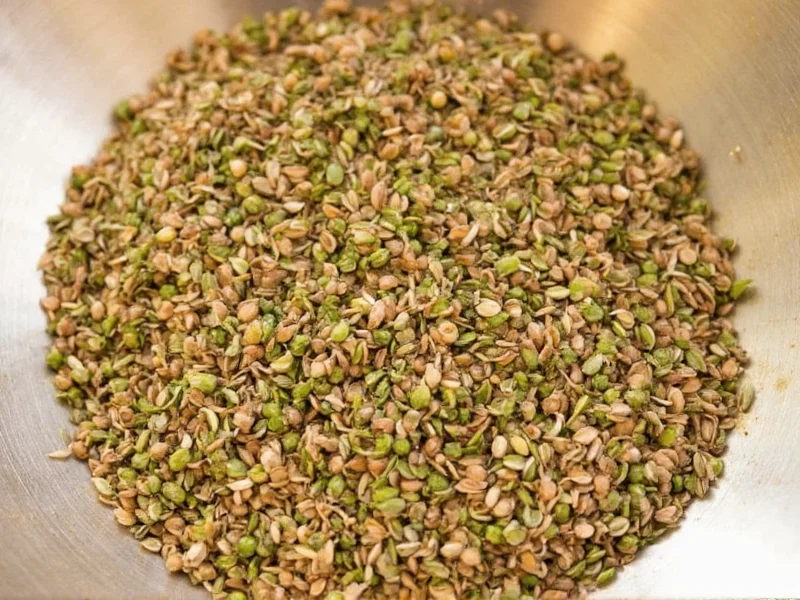Grinding coriander seeds at home transforms your dishes with vibrant, complex flavors that store-bought ground coriander simply can't match. When you grind your own coriander seeds, you control the coarseness, freshness, and intensity of flavor—critical elements for authentic Indian, Middle Eastern, and Latin American cuisines. The process takes mere minutes but elevates everything from curries to marinades.
Why Freshly Ground Coriander Seeds Outperform Pre-Ground
Coriander seeds contain volatile essential oils responsible for their distinctive flavor profile. These compounds start degrading within hours of grinding, causing pre-packaged ground coriander to lose up to 70% of its aromatic compounds within six months. Home grinding preserves maximum flavor intensity and provides a brighter, more complex taste profile with pronounced citrus and herbal notes.
Essential Tools for Grinding Coriander Seeds
Several kitchen tools work effectively for grinding coriander seeds. The right choice depends on your desired texture, available equipment, and quantity needed:
| Grinding Method | Best For | Texture Result | Preparation Time |
|---|---|---|---|
| Mortar and Pestle | Small batches, toasting first | Coarse to medium, uneven | 3-5 minutes |
| Spice Grinder | Regular grinding needs | Fine, consistent powder | 30-60 seconds |
| Coffee Grinder (dedicated) | Medium to large batches | Very fine powder | 20-45 seconds |
| Blender or Food Processor | Large quantities | Slightly coarse | 1-2 minutes |
Step-by-Step Guide to Grinding Coriander Seeds
Method 1: Traditional Mortar and Pestle Technique
This method allows you to control texture precisely while releasing maximum flavor. First, toast 2-3 tablespoons of coriander seeds in a dry skillet over medium heat for 2-3 minutes until fragrant. Transfer immediately to a mortar. Using a circular grinding motion with firm pressure, crush the seeds until they reach your desired consistency. This traditional approach produces the most aromatic ground coriander but requires more physical effort.
Method 2: Electric Spice Grinder Method
For consistent, fine powder with minimal effort, use a dedicated spice grinder. Add toasted or raw coriander seeds (1-2 tablespoons at a time) to the grinder. Pulse in 5-second intervals until uniformly ground, scraping down sides as needed. Avoid overfilling the grinder chamber, as this creates uneven results. This method preserves maximum essential oils while delivering restaurant-quality consistency.
Method 3: Coffee Grinder Alternative
If you have a coffee grinder dedicated solely to spices, it works exceptionally well for coriander seeds. Never use your coffee grinder for both coffee and spices unless it's thoroughly cleaned between uses, as flavors will transfer. Process seeds in small batches using short bursts to prevent overheating, which can degrade flavor compounds.
Pro Tips for Perfectly Ground Coriander
Toasting coriander seeds before grinding dramatically enhances their flavor profile. Heat seeds in a dry skillet over medium-low heat for 2-3 minutes, shaking frequently until fragrant and slightly darker. Let them cool completely before grinding, as warm seeds create steam that leads to clumping. For curry pastes and wet dishes, grind seeds slightly coarser; for dry rubs and baking, aim for a fine powder.
Store freshly ground coriander in an airtight container away from light and heat. Properly stored, it maintains peak flavor for 2-3 weeks—significantly longer than commercial ground coriander but still much shorter than whole seeds, which stay fresh for 6-12 months. Never refrigerate ground spices, as moisture causes clumping and flavor degradation.
Common Mistakes to Avoid When Grinding Coriander Seeds
Many home cooks make these critical errors that compromise flavor. Overheating during toasting burns the delicate essential oils—use medium-low heat and constant motion. Grinding too much at once creates uneven texture; process in small batches. Skipping the cooling step before grinding causes moisture issues. Using a wet mortar or grinder introduces moisture that degrades quality. And perhaps most importantly, grinding coriander too far in advance sacrifices the very freshness you're working to achieve.
How Ground Coriander Differs from Cilantro
Many confuse coriander seeds with cilantro (also called coriander leaves), but they're distinct ingredients from the same plant. Coriander seeds come from the plant's dried fruit, while cilantro refers to the fresh leaves. Ground coriander has warm, citrusy, slightly sweet notes, whereas cilantro leaves offer bright, herbal, sometimes soapy flavors. Understanding this difference prevents recipe errors and helps you use each component effectively.











 浙公网安备
33010002000092号
浙公网安备
33010002000092号 浙B2-20120091-4
浙B2-20120091-4